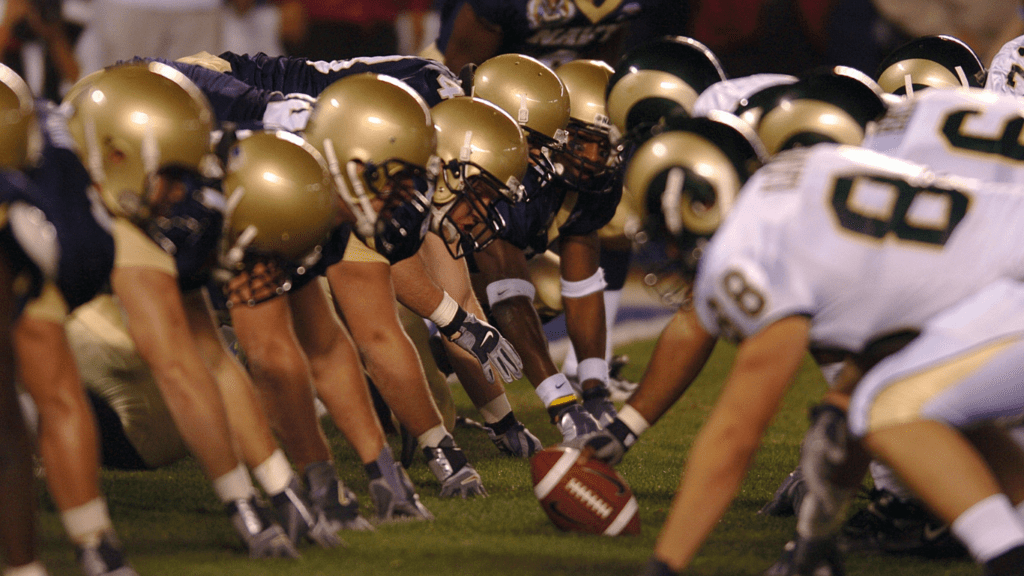Delving into the realm of sports analytics, I’ve always been fascinated by the intersection of data and game outcomes. In the high-stakes world of the NFL, win probability models stand as a testament to the power of data-driven insights.
These models offer a unique glimpse into the dynamics of football games, providing a predictive edge that can sway the course of a match. As I explore the intricate workings of win probability models in the context of NFL outcomes, it’s clear that data holds the key to unlocking hidden patterns and trends.
By harnessing the wealth of statistics available, teams and fans alike can gain a deeper understanding of what drives success on the gridiron. Join me on this journey as we unravel the secrets behind how data-driven insights shape the thrilling unpredictability of NFL games.
The Importance of Win Probability Models in NFL
Exploring win probability models in the NFL unveils crucial insights that drive strategic decisions on and off the field. As an avid follower of sports analytics, I delve into the pivotal role these models play in predicting game outcomes accurately.
Leveraging statistical data, NFL win probability models offer a competitive edge by foreseeing potential scenarios, empowering teams to make informed choices during crucial game moments. Implementing win probability models in NFL games proves indispensable in deciphering the intricate patterns that dictate success.
These models provide a nuanced understanding of the game’s dynamics, shedding light on momentum shifts, key player performances, and strategic play-calling strategies. By embracing data-driven insights, teams can capitalize on emerging trends and optimize their chances of victory in the highly competitive landscape of professional football.
Understanding Data-Driven Insights
Introduction to Win Probability Models
Exploring win probability models in the NFL sheds light on the predictive power of data analytics in sports. These models utilize historical and in-game data to calculate the likelihood of a team winning at any point during a match.
By considering factors such as score differentials, time remaining, and game situations, win probability models offer valuable insights into teams’ performance and potential outcomes.
Data Collection and Analysis
In the realm of sports analytics, data collection and analysis play a pivotal role in developing accurate win probability models. Teams gather and analyze vast amounts of data, including player statistics, game trends, and situational metrics.
By employing advanced statistical techniques and machine learning algorithms, analysts can identify patterns, trends, and key performance indicators that contribute to the success of win probability models. This rigorous data analysis process enables teams to make data-driven decisions that can influence game strategies and outcomes significantly.
Applications of Win Probability Models in Predicting NFL Games
When it comes to predicting NFL games, win probability models play a significant role in providing valuable insights. These models are instrumental in helping teams make informed decisions both on and off the field.
By leveraging statistical data and advanced analytics, win probability models offer a predictive advantage that can influence game outcomes and strategic choices.
Factors Considered in Win Probability Models
In win probability models used for predicting NFL games, several key factors are taken into account to assess a team’s likelihood of winning at various points during a match. Some of the crucial elements considered in these models include:
- Score Differentials: The difference in points between the competing teams is a critical factor in determining win probabilities. A team trailing by a significant margin may have lower win probability than a team with a narrow lead.
- Time Remaining: The amount of time left in the game is a crucial variable in win probability calculations. As the game progresses, the impact of each play on the overall outcome can change based on the time remaining on the clock.
- Momentum Shifts: Win probability models also factor in momentum shifts during a game. Big plays, turnovers, or strategic decisions can influence the momentum of a game, affecting the team’s chances of winning.
- Player Performance: Individual player performance metrics, such as passing yards, rushing yards, completion percentages, and defensive stats, are important considerations in assessing win probabilities. Strong individual performances can significantly impact a team’s overall chances of success.
- Game Situation: The specific circumstances of a game, including red zone opportunities, fourth-down decisions, and two-minute drills, are vital components of win probability models. These situational factors play a crucial role in predicting game outcomes.
By analyzing these key factors and incorporating them into win probability models, teams and analysts can gain valuable insights into game dynamics and make data-driven decisions that increase their chances of success on the field.
Limitations and Challenges
Exploring win probability models in NFL games unveils insightful predictions, yet it’s vital to acknowledge the inherent limitations and challenges that accompany these data-driven tools. While these models are powerful in forecasting game outcomes, they are not without constraints that impact their accuracy and applicability in real-world scenarios.
- Incomplete Data Sets: Despite leveraging historical and in-game data, win probability models may encounter limitations due to missing or incomplete datasets. Inaccuracies in data collection could hinder the model’s ability to provide precise predictions, potentially leading to flawed insights.
- Assumption Risks: Win probability models operate based on certain assumptions regarding player performance, team dynamics, and game situations. Deviations from these assumptions or unforeseen events during a match can introduce uncertainties and affect the model’s predictive capabilities.
- Overreliance on Statistical Trends: While statistics play a crucial role in developing win probability models, there is a risk of overreliance on historical trends. In dynamic sports like football, where unexpected plays and outcomes are common, solely relying on past data may overlook unique game dynamics and player performances.
- Dynamic Nature of Sports: NFL games are dynamic and influenced by multiple unpredictable factors, including player injuries, weather conditions, referee decisions, and team strategies. Win probability models, though robust, may struggle to adapt quickly to these dynamic changes during a game, impacting the accuracy of their predictions.
- Complexity of Human Behavior: Human behavior, both on and off the field, adds a layer of complexity to win probability models. Factors such as player emotions, coaching strategies, and fan influence are challenging to quantify accurately, posing a challenge to the model’s ability to encompass all relevant variables for prediction.
- Performance Variability: Individual player performances in NFL games can vary widely, impacting the overall team dynamics and game outcomes. Win probability models may face challenges in accurately accounting for the unpredictable nature of player performances, especially in high-pressure situations or during crucial game moments.
Navigating these limitations and challenges is essential for teams, analysts, and enthusiasts utilizing win probability models in the NFL. By understanding these constraints and refining the model’s methodologies, stakeholders can enhance the accuracy and effectiveness of these predictive tools, ultimately optimizing decision-making processes in the realm of sports analytics.






